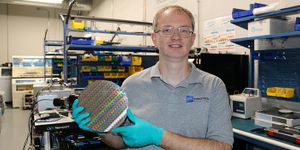Lollipop for saliva collection
A team of researchers at the University of Washington have designed a novel (and unique!) way to collect saliva samples for testing, particularly from children: a special type of lollipop. This technological confection is described in a recent article published in Analytical Chemistry.
Saliva can be a useful way to detect and diagnose a range of health conditions, including bacterial infections like the common strep throat and even other health conditions, such as gum disease. Some studies even suggest that saliva can be used to detect chronic health conditions like HIV.
Despite its diagnostic potential, there’s nothing pleasant about having a saliva sample taken, particularly in children. If you’ve ever had strep throat, you know that having a swap take a sample from the back of your throat is uncomfortable and invasive. However, the new confection researchers have designed could enable clinicians to collect saliva for testing, replacing the need for more invasive swab techniques to collect tissue samples and test using polymerase chain reaction techniques.
The new tool, called CandyCollect, is designed to make saliva sample collection both easy and fun for patients, especially for children who may be nervous to have other testing done, such as swabs. CandyCollect lollipops are simple isomalt structures with grooves carved into the candy, enabling clinicians to collect saliva samples for testing while a patient enjoys the lollipop.
To test the effectiveness of CandyCollect, researchers tested both the ability of the new candy to collect saliva samples and with patient satisfaction with the new product. Researchers sent 28 volunteers both the new CandyCollect lollipop and a traditional saliva testing kit. Volunteers were asked to try them both (collecting samples with the lollipop and the traditional method) and return both. When testing the saliva samples in the lollipop, researchers were able to correctly identify Streptococcus mutans and Staphylococcus aureus bacteria in the samples, highlighting their effectiveness.
Patients also preferred the lollipops, finding them to seem cleaner and less digusting that the traditional testing option.
Sources: Medgadget; Analytical Chemistry; European Journal of Dental Education








